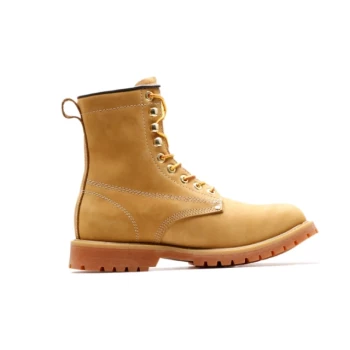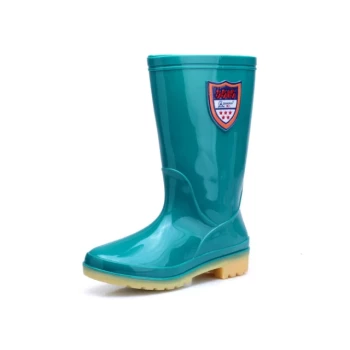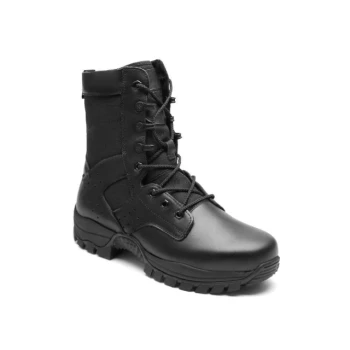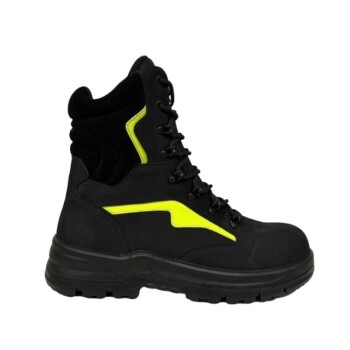For everyday wear, the best cowboy boots are those that prioritize comfort, proper fit, and versatile design over highly specialized features. Key elements to consider are a balanced heel height, a supportive insole, a durable sole, and a breathable interior lining that prevents rubbing.
The search for the perfect everyday cowboy boot is not about finding the most elaborate design, but about choosing a well-constructed boot with foundational comfort features that seamlessly integrate into your daily life.
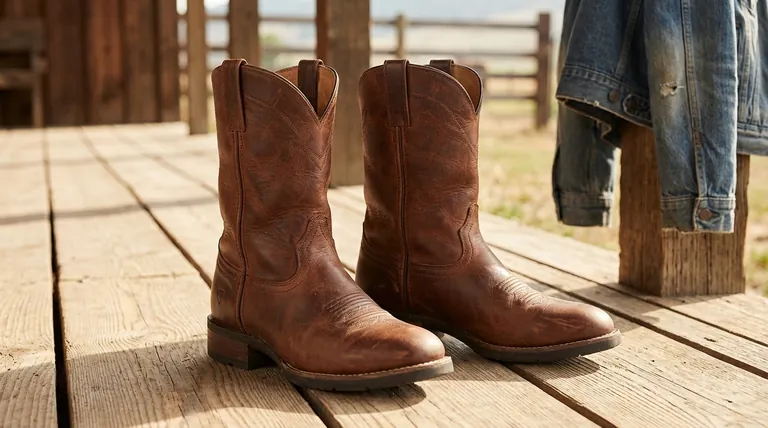
Foundational Elements: Fit and Comfort
Before considering style, you must ensure the boot is physically comfortable for all-day wear. This comes down to three critical interior components.
The Importance of a Proper Fit
A correct fit is non-negotiable. Your toes should have enough room to move freely, and while a small amount of heel slippage is normal in new boots, your heel should not rub aggressively against the back.
This initial fit determines the long-term comfort and health of your feet.
Cushioned and Supportive Insoles
Many modern boots come with cushioned insoles that provide shock absorption and support. This feature is crucial for anyone who will be walking or standing for long periods on hard surfaces like concrete or pavement.
Breathable Interior Lining
A quality lining, often made of soft calf-skin leather, serves two purposes. It prevents interior seams from rubbing against your skin and creates a breathable environment, keeping your feet comfortable even in warmer weather.
Key Design Choices for Versatility
The external design of the boot dictates its practicality and how well it pairs with different outfits and environments.
Heel Style: Roper vs. Classic
The roper heel is typically about one inch high with a straight, broad profile, making it extremely stable and ideal for walking. The more traditional classic or "walking" heel is slightly higher and angled, offering a more iconic look while still being functional.
For pure walking comfort, the roper style is often preferred.
Sole Construction: Leather vs. Rubber
A traditional leather sole is sleek, classic, and breathes well. However, it offers less traction on wet surfaces and can wear more quickly on abrasive terrain.
A rubber sole provides superior grip, durability, and water resistance, making it a highly practical choice for variable weather and urban environments.
Toe Shape and Style
While largely a stylistic choice, the toe shape affects fit. Round or square toes generally offer more room and a more relaxed fit than pointed toes, making them a popular choice for daily wear.
Understanding the Trade-offs
Choosing the right boot means balancing competing priorities. Understanding these trade-offs is key to avoiding buyer's remorse.
Style vs. All-Day Comfort
Exotic leathers, extremely high heels, or intricate stitching can create a stunning look. However, these features may come at the expense of the practical comfort needed for continuous, everyday use.
Durability vs. Weight
Features designed for heavy work, like steel toes or extra-thick soles, add significant durability. But this also adds weight, which can become fatiguing during a full day of casual wear.
The Inevitable Break-In Period
Even the most well-made leather boots require a break-in period. Be prepared for some initial stiffness as the leather molds to the specific shape of your foot.
Making the Right Choice for Your Goal
Select your boot based on what "everyday wear" truly means for you.
- If your primary focus is maximum comfort for walking: Choose a roper-style boot with a low, broad heel, a cushioned insole, and a flexible rubber sole.
- If your primary focus is a classic look with office-to-evening versatility: A traditional boot with a medium-height walking heel, a quality leather sole, and a supportive lining is an ideal choice.
- If your primary focus is durability for mixed indoor and outdoor conditions: Prioritize a boot with a sturdy rubber sole, full-grain leather, and high-quality construction like a Goodyear welt.
Ultimately, the right boot is a balanced tool that comfortably supports your daily life without sacrificing your personal style.
Summary Table:
| Feature | Ideal Choice for Everyday Wear | Why It Matters |
|---|---|---|
| Heel Style | Roper or Walking Heel | Provides stability and comfort for prolonged walking. |
| Sole Material | Rubber | Offers superior grip, durability, and water resistance. |
| Interior Lining | Breathable Leather (e.g., Calfskin) | Prevents rubbing and keeps feet comfortable. |
| Toe Shape | Round or Square Toe | Allows more room for toes, enhancing all-day comfort. |
| Fit | Snug Heel with Room for Toes | Ensures proper support while preventing blisters. |
Ready to find the perfect everyday cowboy boot?
As a large-scale manufacturer, 3515 produces a comprehensive range of durable and comfortable footwear for distributors, brand owners, and bulk clients. Our production capabilities encompass all types of boots, ensuring you get the perfect combination of style, comfort, and durability for your customers.
Contact us today to discuss your footwear needs and explore our extensive catalog!
Visual Guide

Related Products
- Premium High-Cut Waterproof Safety Boots Manufacturing & Wholesale Solutions
- Premium Wholesale Wheat Nubuck Safety Boot with Rapid Lacing System
- Custom Wholesale Leather Safety Boots Direct Factory Manufacturing
- Customizable Anti-Smash Safety Boots for Wholesale & Private Label Manufacturing
- Premium Grain Leather Safety Boots for Bulk Supply
People Also Ask
- What is the compression resistance requirement in ASTM standards? Essential Guide to the 2,500-lb C Rating
- What are the pros and cons of steel toe work boots? A Guide to Maximum Protection vs. Comfort
- What are the main drawbacks of traditional steel toed safety boots? Heavy Weight & Other Key Disadvantages
- What are the different types of safety toe boots available? Choose the Right Protection for Your Job
- What organization provides safety standards for work boots? Meet ASTM International, the Key to OSHA Compliance








